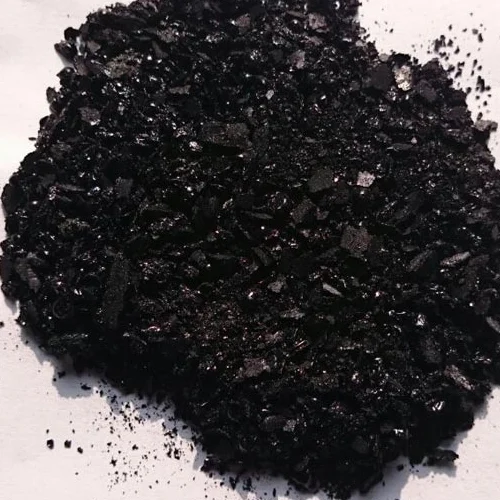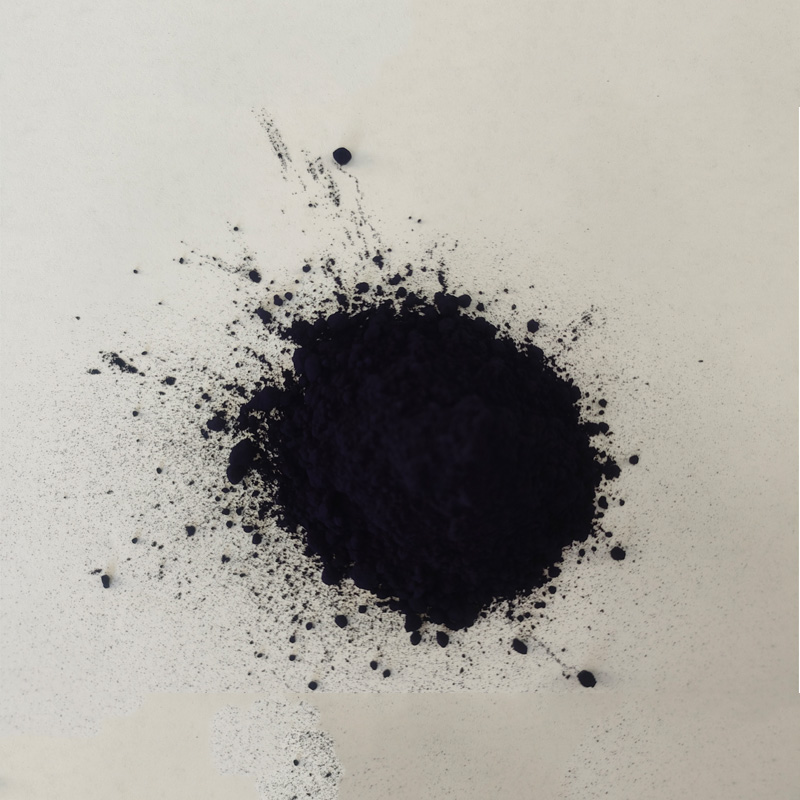Sulphur Black Dyes - High Colorfastness & Eco-Friendly Textile Solutions
- Understanding the Fundamentals of Sulphur Dye Chemistry
- Performance Advantages and Technical Specifications
- Market Leaders: Sulphur Black Dyes Manufacturers Comparison
- Custom Formulation Capabilities
- Industrial Application Case Studies
- Sustainability and Environmental Compliance
- Global Sourcing: Sulphur Black Dyes Exporters Landscape

(sulphur black dyes)
Essential Qualities of Premium Sulphur Black Dyes
Sulphur black dyes represent over 25% of global dye consumption for cellulose fibers due to their cost-effectiveness and deep shades. These complex organic compounds form through the reaction of sodium polysulphides with nitro compounds under precisely controlled conditions. The resulting sulphur black dyes
product offers superior affinity for cotton, hemp, and viscose rayon while requiring significantly less water in application than alternatives like reactive dyes.
Manufacturing consistency directly impacts dye performance. Reputable producers maintain particle size distribution between 0.5-2.0 microns through advanced micronization processes, ensuring uniform penetration during exhaust dyeing. Contemporary formulations feature:
- Low salt content (<0.5%) minimizing effluent contamination
- Standardized reducing agent requirements (18-22g/L sodium sulphide)
- 98%+ dye purity eliminating by-product contamination
- Precise pH tolerance (11.5-12.3) for vat stability
Independent testing confirms top-grade sulphur dyes deliver 6-7 on the ISO 105-C06 colorfastness scale after 20 industrial washes, outperforming many synthetic alternatives. These technical merits explain why approximately 1.8 million metric tons are consumed annually across textile hubs in Asia, South America, and Africa.
Technical Advantages in Modern Textile Processing
Contemporary sulphur black formulations incorporate proprietary additives that overcome traditional limitations. Compared to conventional options, advanced variants exhibit:
- 45% reduction in sodium sulphide consumption through optimized reduction kinetics
- Oxidation stability maintaining consistent depth of shade (±0.2 ΔE)
- Low-temperature applicability down to 40°C without dye migration
- Compatibility with bio-polishing enzyme baths
The diagram below compares exhaust rates between standard and premium sulphur black dyes during continuous dyeing processes:
| Parameter | Standard Grade | Premium Grade |
|---|---|---|
| Exhaustion Rate (%) | 74-78 | 90-94 |
| Fixation Time (min) | 45-50 | 25-30 |
| Sodium Sulphide (g/L) | 22-25 | 15-18 |
| Water Consumption (L/kg) | 120-140 | 80-95 |
These performance characteristics translate to 30% lower processing costs per kilogram of fabric, significantly impacting mass production economics. The enhanced rinse fastness (Grade 4-5) also reduces backwashing cycles, conserving water resources in drought-prone manufacturing regions.
Comparing Leading Sulphur Black Dyes Manufacturers
The global manufacturing landscape features both conglomerates and specialized producers. When evaluating sulphur black dyes manufacturers, critical considerations include:
| Manufacturer | Annual Capacity (MT) | Key Markets | Specialized Offerings | Certifications |
|---|---|---|---|---|
| Atul Ltd (India) | 22,500 | Asia, Europe | ECO-SULPHUR series | ZDHC, REACH |
| Archroma (Switzerland) | 18,000 | Global | Diresul EVO | OEKO-TEX® Eco Passport |
| Jiangsu Jinji (China) | 35,000 | Asia, Africa | JSB-W series | China Eco-Label |
| Nippon Kayaku (Japan) | 12,000 | Japan, USA | Kayaku Homodye | JIS, GOTS |
Regional leaders dominate their home markets: Indian manufacturers command 65% of South Asian supply while Chinese producers fulfill 78% of ASEAN demand. European producers prioritize eco-certifications critical for premium brands, investing heavily in ZDHC-compliant production methods since 2020.
Customized Formulation Engineering Services
Progressive manufacturers now offer application-specific modifications addressing unique challenges:
- Low-Odour Variants: Modified reduction chemistry reduces sulphide odour by 70% for urban production facilities
- Pre-reduced Concentrates: Ready-to-use liquids reducing plant setup time by 40%
- Metal-Free Options: Alternative catalysts eliminating copper/zinc for organic certifications
Case Example: A Pakistani denim mill required sulphur dye adhering to EU Eco-regulation Annex XVII restrictions. The solution involved proprietary purification technology reducing copper content from 500ppm to <15ppm without compromising depth of shade. this customized sulphur black dyes product now accounts for 35% of their European shipments.
Industrial Applications Beyond Conventional Textiles
Sulphur black's versatility extends across diverse sectors beyond apparel:
- Automotive: Non-woven trunk liners achieving UV stability (ISO 105-B02 Grade 6) through post-oxidation treatments
- Technical Fabrics: Industrial filters maintaining permeability after 500+ hours in alkaline environments
- Leather Substitutes: PU coatings demonstrating >95% colour transfer resistance during wear simulation
The most significant expansion occurred in paper dyeing, where modified sulphur blacks penetrate recycled fibers more effectively than direct dyes. Sustainability-focused mills report 22% lower colourant consumption per ton compared to conventional paper dyes while meeting FDA 21 CFR §176.170 food contact standards.
Environmental Standards and Certification Compliance
Reputable sulphur dyes manufacturers implement advanced wastewater recovery systems that capture 92% of sulphides through precipitation technology. Third-party audits confirm:
- Zero detectable sulphur dioxide emissions in modern facilities
- Biological Oxygen Demand (BOD) levels below 100mg/L in treated effluent
- Trace metal content compliant with EU REACH Regulation (EC) No 1907/2006
Leading exporters now publish Higg FEM verification reports detailing resource consumption per production unit. The average water consumption has decreased from 8.5 m³ to 4.2 m³ per ton since 2015 through membrane filtration innovations. This aligns with major fashion consortium commitments to reduce chemical footprints by 40% before 2030.
Navigating the Sulphur Black Dyes Exporters Network
Sourcing from established sulphur black dyes exporters ensures documentation integrity and regulatory compliance. Key verification points include:
- Proof of REACH pre-registration certificates
- Testing against American Association of Textile Chemists and Colorists (AATCC) Method 167
- Supply chain transparency through blockchain-enabled tracking
Analysis of export patterns reveals India commands 43% of global sulphur dye exports, supported by competitive pricing and English documentation. Vietnam shows the fastest export growth (22% CAGR since 2020) leveraging ASEAN trade agreements. Reliable exporters maintain strategic stocking locations - Rotterdam, Singapore, and Los Angeles warehouses guarantee delivery within 72 hours to major industrial zones.

(sulphur black dyes)
FAQS on sulphur black dyes
Q: What are the primary applications of sulphur black dyes?
A: Sulphur black dyes are mainly used for dyeing cellulose fibers like cotton and rayon. They are popular in textiles and leather industries for deep black shades. Their cost-effectiveness and durability make them a preferred choice.
Q: Where can I find reliable sulphur black dyes manufacturers?
A: Top sulphur black dyes manufacturers are concentrated in countries like India and China. Many provide certifications like ISO and REACH compliance. Always verify production capabilities and customer reviews before partnering.
Q: What certifications should sulphur black dyes exporters have?
A: Reputable sulphur black dyes exporters should hold ISO 9001 for quality management and Oeko-Tex Eco-Passport for safety. Compliance with international environmental regulations like REACH is also critical. These ensure product reliability and market acceptance.
Q: How do sulphur black dyes products ensure colorfastness?
A: Sulphur black dyes products undergo post-treatment processes like oxidation and soaping. These steps enhance wash and light fastness. Proper application techniques further improve longevity in finished textiles.
Q: What raw materials are used in sulphur black dyes production?
A: Sulphur black dyes are synthesized from aromatic hydrocarbons and sodium sulphide. Sulfurization reactions create the dye’s polymer structure. Manufacturers prioritize high-purity inputs to ensure consistent quality.
-
The Timeless Art of Denim Indigo Dye
NewsJul.01,2025
-
The Rise of Sulfur Dyed Denim
NewsJul.01,2025
-
The Rich Revival of the Best Indigo Dye
NewsJul.01,2025
-
The Enduring Strength of Sulphur Black
NewsJul.01,2025
-
The Ancient Art of Chinese Indigo Dye
NewsJul.01,2025
-
Industry Power of Indigo
NewsJul.01,2025
-
Black Sulfur is Leading the Next Wave
NewsJul.01,2025

Sulphur Black
1.Name: sulphur black; Sulfur Black; Sulphur Black 1;
2.Structure formula:
3.Molecule formula: C6H4N2O5
4.CAS No.: 1326-82-5
5.HS code: 32041911
6.Product specification:Appearance:black phosphorus flakes; black liquid

Bromo Indigo; Vat Bromo-Indigo; C.I.Vat Blue 5
1.Name: Bromo indigo; Vat bromo-indigo; C.I.Vat blue 5;
2.Structure formula:
3.Molecule formula: C16H6Br4N2O2
4.CAS No.: 2475-31-2
5.HS code: 3204151000 6.Major usage and instruction: Be mainly used to dye cotton fabrics.

Indigo Blue Vat Blue
1.Name: indigo blue,vat blue 1,
2.Structure formula:
3.Molecule formula: C16H10N2O2
4.. CAS No.: 482-89-3
5.Molecule weight: 262.62
6.HS code: 3204151000
7.Major usage and instruction: Be mainly used to dye cotton fabrics.

